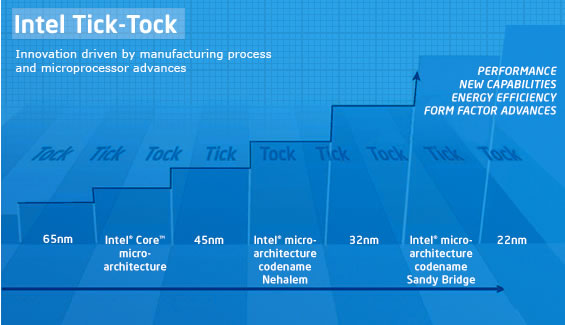While reporting its record financial results yesterday, Intel also made a quick mention of its upcoming "Sandy Bridge" chip design, announcing that they have accelerated their 32-nanometer factory ramp in an effort to meet the anticipated demand. Although the company offered very little news besides citing the "very strong reception" of its all-new architecture, early details have already started to emerge from a handful of sources.
Just a couple of days ago we learned about Intel's alleged plans to stick with the 'Core iX' naming scheme that is already in use, with product numbers being in the 2000s. Now Notebook Italia claims to have obtained some actual specs of the upcoming models. According to the leak, so far five chips would make it to the initial lineup, including the top-of-the-line Core i7 2600 model featuring four cores, eight threads, 8MB L3 cache and a clock speed of 3.2GHz.

A couple of Core i5 processors, the 2400 and 2500, will each sport 3.1GHz and 3.3GHz frequencies along 6MB L3 cache and four physical cores – but no Hyper-Threading support. Finally, the Core i3 2100 and Core i3 2120 would run at the same respective speeds as the Core i5 models but featuring only two cores with Hyper-Threading and 3MB L3 cache. Needless to say, none of this has been officially confirmed by Intel so take it with a pinch of salt.
The new architecture is set to launch some time later this year featuring an on-die integrated graphics core and several other enhancements made possible by its 32nm manufacturing process. It will be more efficient at executing tasks, have "improved inter-buses" for faster on-chip communication, and support new instructions like Intel's Advanced Vector Extension for faster video and audio processing. Sandy Bridge chips will also require a brand new socket, LGA 1155 and later on LGA 2011 for six and eight core variants, neither of which will be backwards compatible with older CPUs.